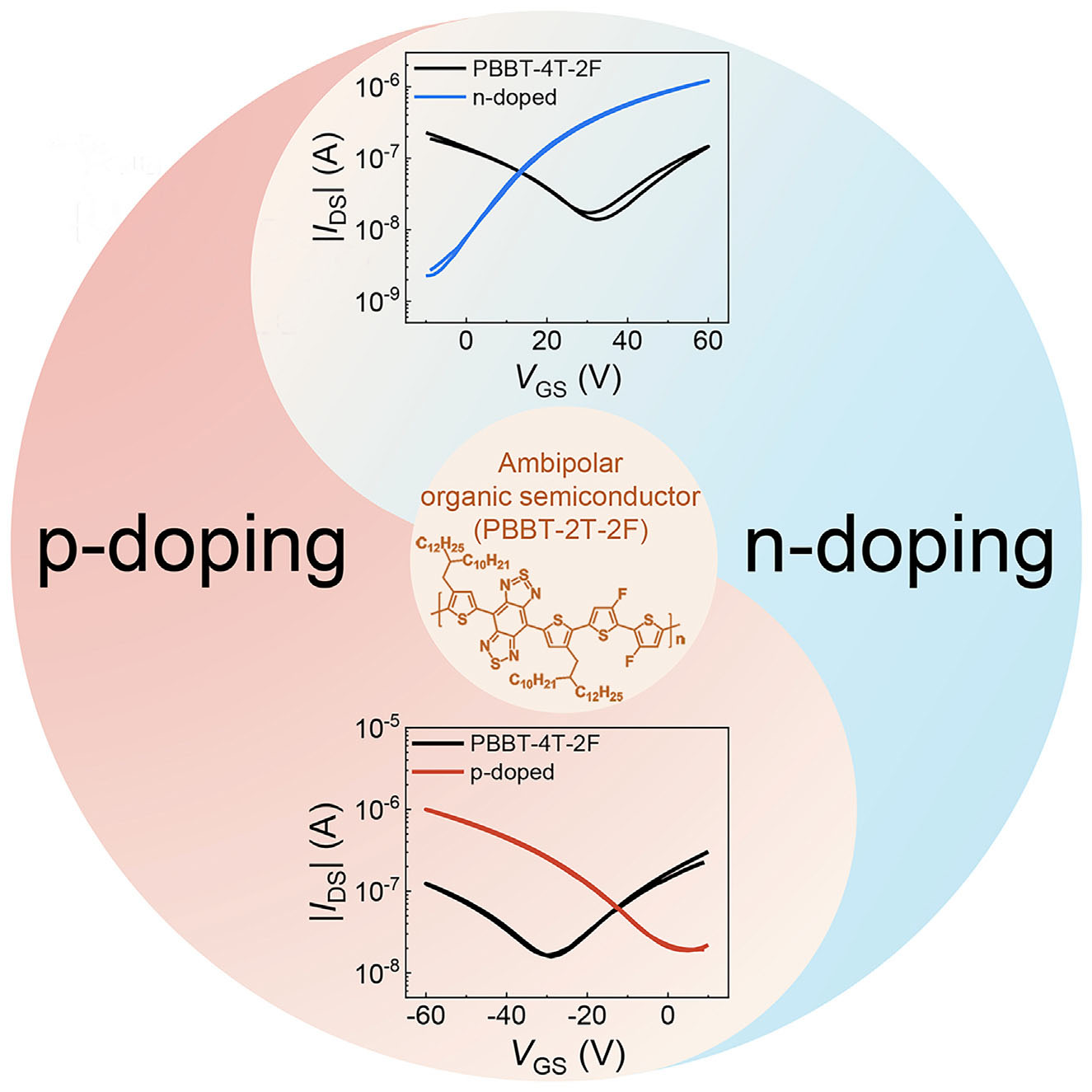| Jun 09, 2022 | |
Realization of 'silicon-like' doping in organic semiconductors |
|
| (Nanowerk Spotlight) Doping, which can provide charge carriers to semiconductors, is an essential technology for semiconductors and devices, and it can be classified as n- and p-doping depending on the charge carriers provided by dopants being holes or electrons. | |
| For the most widely used inorganic semiconductor silicon, both n- and p-type doping methods have been well established, enabling efficient and controllable doping of silicon. For example, when phosphorus atoms are implanted to replace the silicon atoms for n-doping, the result in n-type silicon. | |
| Similarly, when boron atoms are employed for p-doping, p-type silicon is obtained. Doping efficiency of such processes can be as high as 100 % and the doping level can be easily controlled by the implanted ratio of dopant atoms. These successful doping strategies are the cornerstone of the industrial usage of silicon in microelectronics. | |
| Organic semiconductors (OSCs) are a class of semiconductor materials consisting of conjugated molecules or polymers. Compared to inorganic semiconductors, OSCs have distinctive advantages including being solution-processable, suitable for low-cost and large-area fabrication of electronics, and applicable to flexible/stretchable electronics, among others. | |
| Given the importance of doping techniques for semiconductors, it is highly attractive to establish doping methodologies for OSCs similar to that for silicon. This would simplify the difficulty and cost of synthesizing different types of OSCs for various applications, as well as lead to interesting structures such as organic PN homojunctions. However, realization of this idea remains a central challenge due to the difficulty of simultaneously effective p- and n-doping on a typical OSC (either n- or p-type). | |
| In a recent study (Matter, "Selective doping of a single ambipolar organic semiconductor to obtain P- and N-type semiconductors"), a group of researchers from China and United States have addressed the above-mentioned challenges and demonstrated the feasibility of completely controlling the polarity of a solution-processed OSC by selective doping. | |
| This is achieved through synthesizing an OSC (PBBT-4T-2F) with well-balanced ambipolar transport as the host semiconductor, together with the employment of proper dopants TrTPFB (p-dopant) and N-DMBI (n-dopant). Because the ambipolar host semiconductor, like silicon, possesses both p- and n-type properties, it offers possibility to be both p- and n-doped. Consequently, p- and n-type OSCs can be achieved just by p- and n-doping of the host OSC, respectively. | |
| One typical outcome is that both p- and n-type field-effect transistor devices can be made from the host semiconductor PBBT-4T-2F just by appropriate doping (Figure 1). | |
 |
|
| Figure 1. Selective doping of a single organic semiconductor for fabricating p- and n-type field-effect transistors. (Reprinted with permission from https://doi.org/10.1016/j.matt.2022.05.037, Cell Press) | |
| Utilizing this doping technique, the authors also show the feasibility of constructing PN homojunctions with the p- and n-doped semiconductor layers. They employed the film dry transfer method to obtain organic PN homojunctions and the corresponding diode-structure devices. | |
| The authors reveal there is band bending occurring at the PN homojunction interface, which causes a depletion region with built-in voltage. These organic PN homojunctions provide unique platforms for further investigations of semiconductor physics in OSCs. | |
| Furthermore, near infrared (NIR) photodiodes are constructed based on the organic PN homojunctions as a demonstration of their potential applications. The photodiode device can work in the self-powered mode thanks to the built-in electric field in the PN homojunctions. | |
| In summary, this work demonstrates realization of 'silicon-like' doping in organic semiconductors, and may inspire more interest in constructing novel devices through controllable doping of a single host organic semiconductor. | |
| By Suhao WANG, Principal Investigator, Laboratoire de physicochimie des polym??res et des interfaces, CY Cergy Paris Universit??. Email: Email: [email protected] | |
|
Become a Spotlight guest author! Join our large and growing group of guest contributors. Have you just published a scientific paper or have other exciting developments to share with the nanotechnology community? Here is how to publish on nanowerk.com. |
|
